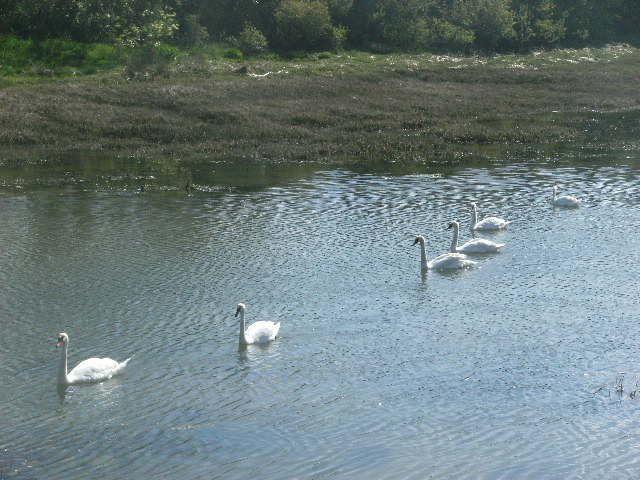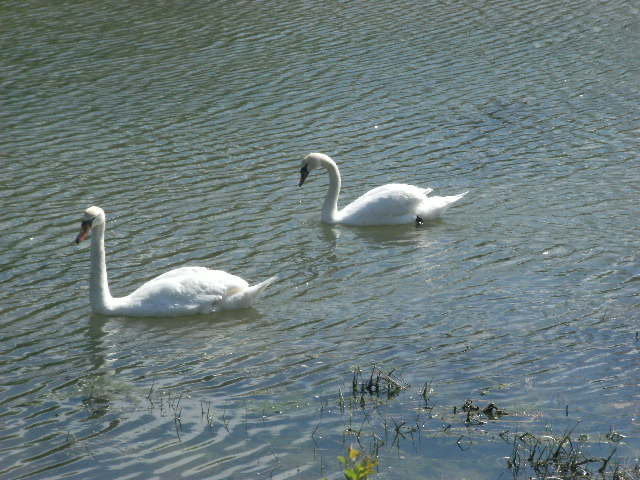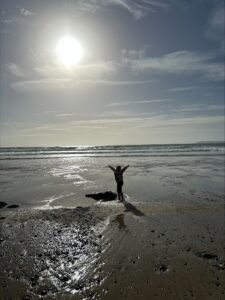The Swans Of Sandy Haven
Every March, Mute swans (Cygnus olor) gather in Sandy Haven Pill. Their numbers steadily increase to around twenty. They are a sociable lot and fish and swim together following the tide in and out of the pill. At high tide they are at the top of the flooded pill and at low tide when the pill is dry, they patrol in the shallow sea around the mouth of the stream descending the valley and low tide sandy beach. This area is sheltered by the low cliffs at the west side of the pill. Sometimes at high tide a loud banging can be heard as the swans take off from the water in flight with their wings banging the surface of the water.
Because they are protected the number of swans in the UK has been steadily increasing. There are about 6,000 to 7,000 breeding pairs of mute swans in the UK and their numbers increase to around 79,000 in winter when others fly to the UK from the Baltic area to winter. Swans feed on water plants, insects and snails. Swans mate in spring to early summer which is the time they are found at Sandy Haven Pill. However they do not nest in the pill and are not seen accompanied by cygnets. The latter would be born in May to July and stay with their parents for six months. Sandy Haven pill is a spring meeting ground and possible breeding site but then the birds move away to nest.
There are six types of swans: Bewick’s; Black, Black-necked; Coscoroba; Mute and Trumpeter. The mute swan is distinguished by an orange bill bordered by black, the black extends to the eye. It has grey/black legs and a white plumage.
The Crown claimed ownership of all mute swans in England and Wales in the 12th century. This was to prevent the common people from depriving the royals of a favourite banqueting dish.





